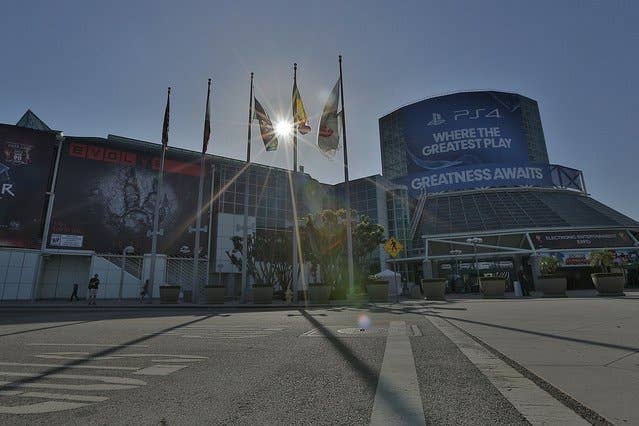Two takes on E3 2015
A veteran of 13 shows and a first-timer share their thoughts on the week that was
Last week, the Electronic Entertainment Expo was held in Los Angeles. GamesIndustry.biz sent two writers, one who had been to the show numerous times, and one who would be attending in person for the very first time. We thought it might be interesting to compare and contrast their distinct perspectives on E3 2015, and what the show means to the industry today.
Brendan Sinclair
My first E3 was 2001. The biggest news of the show was the reveal of Super Smash Bros. Melee for the yet-to-be-released GameCube. Much of the show floor buzz was about Take-Two Interactive's "riot simulator" State of Emergency, which had crowds of people waiting to play even as the Grand Theft Auto III kiosk on the opposite side of that display went frequently ignored.
This year's show is my 13th in attendance. The industry has changed. I've changed. And naturally, E3 has changed. It's smaller, for one thing. Kentia Hall is no longer a glorified flea market filled with dozens of different DVD case suppliers, lifelike gun peripheral importers, and the occasional industry-altering innovator (hello, Bioware; you too, Guitar Hero). Instead, it is a parking garage.
These days, there is no need for Kentia Hall because there simply aren't that many exhibitors at E3. Sony, Nintendo, and Microsoft still have massive booths, but the rest of the field has been thinned. Gone are the Kemcos, the Midways, the THQs, and this year, even the Segas. The South Hall and West Hall aren't quite as full as they were in years past. Even the advertising has become less pervasive. The Staples Center sports banners for women's pro basketball, but nothing for Tony Hawk's Pro Skater. The three towers of the Hotel Figueroa now bear an ad for a movie instead of the next big AAA blockbuster.
"The South Hall and West Hall aren't quite as full as they were in years past. Even the advertising has become less pervasive."
Brendan Sinclair
Not all the changes are bad, of course. In one of my first years at the show, the outlet I wrote for hired Playboy Playmates to walk the floor handing out condoms bearing the website's name. It was a juvenile play for attention, and one that was easily ignored in a sea of similarly tacky and tasteless marketing strategies. These days, women at the show are more likely to be hosting press conferences than pole-dancing at them.
E3 is still the most exciting week of the gaming year, but it will never be what it was again. It was a console gaming festival back when console gaming made up the majority of the industry. But gaming has long since outgrown the consoles, and so too has it outgrown E3. The show is still relevant to the industry, still crucial for many of the largest players, but it is no longer comprehensive.
I have long since stopped attending E3 hoping to see the Next Big Thing. These days I hope only to see a couple good console games I'll want to buy, and perhaps a few signs that the industry is getting better in some ways, that there are still things to look forward to. In that sense, this year's show was a resounding success, even to someone who's been through this whole routine many times before.
Rachel Weber
Despite spending nine years in the games industry this was my first year actually attending. I heard the stories of the golden age of E3 when you had to wade through $100 bills to get to the big games and the horrific tales of scheduling mishaps so I considered myself prepared. I wasn't.
The size of the two halls surprised me, like massive aircraft hangers with the big boys clustered front and centre and the odd neglected mobile gaming stand relegated to the back near the taco stand. The booths too were like medieval castles made of light bulbs and MDF. If you need any proof that the industry makes money you can find it on these swollen stands, staffed by hundreds of young people who shrug when you mention their CEO's name and catered like weddings.
"The attendees themselves seemed a diverse mix of super fans grabbing up the limited swag on offer, journalists from every point on the media spectrum, businessmen in suits, and people with an alarming collection of branded T-shirts from 2009."
Rachel Weber
I was actually surprised to see booth babes are still a thing, in a slightly more subtle fashion but still around. I'm not talking about the cosplay models, more the girls in tiny outfits hired to drape themselves over the Mad Max car (way to miss the point of Fury Road) or the young women wearing basketball shorts endlessly posing for selfies with random men. It didn't feel like an issue as much as a sign that the idea of inclusivity has yet to filter through to a few marketing appointments.
The attendees themselves seemed a diverse mix of super fans grabbing up the limited swag on offer, journalists from every point on the media spectrum, businessmen in suits, and people with an alarming collection of branded T-shirts from 2009. It didn't feel like a trade show, the people queuing for hours to play Call Of Duty or Star Wars Battlefront seemed no different from the gamers who queue for hours at consumer shows like Gamescom or EGX.
Now that I've had my E3 initiation, I love the indies and art talks of GDC more than ever. I love big games and AAA and Peter Moore as much as the next gamer, but what E3 seems to represent more than anything is cold, hard cash. Here's the money we can spend on a booth. Here are the games that are going to make the money, that you'll see everywhere, all the time, between now and their release date. Here's Kanye West. E3 is about confirming that the big games are still big; GDC is about discovering the games you didn't know you wanted.
This industry needs both, but I know which one I prefer to attend.









